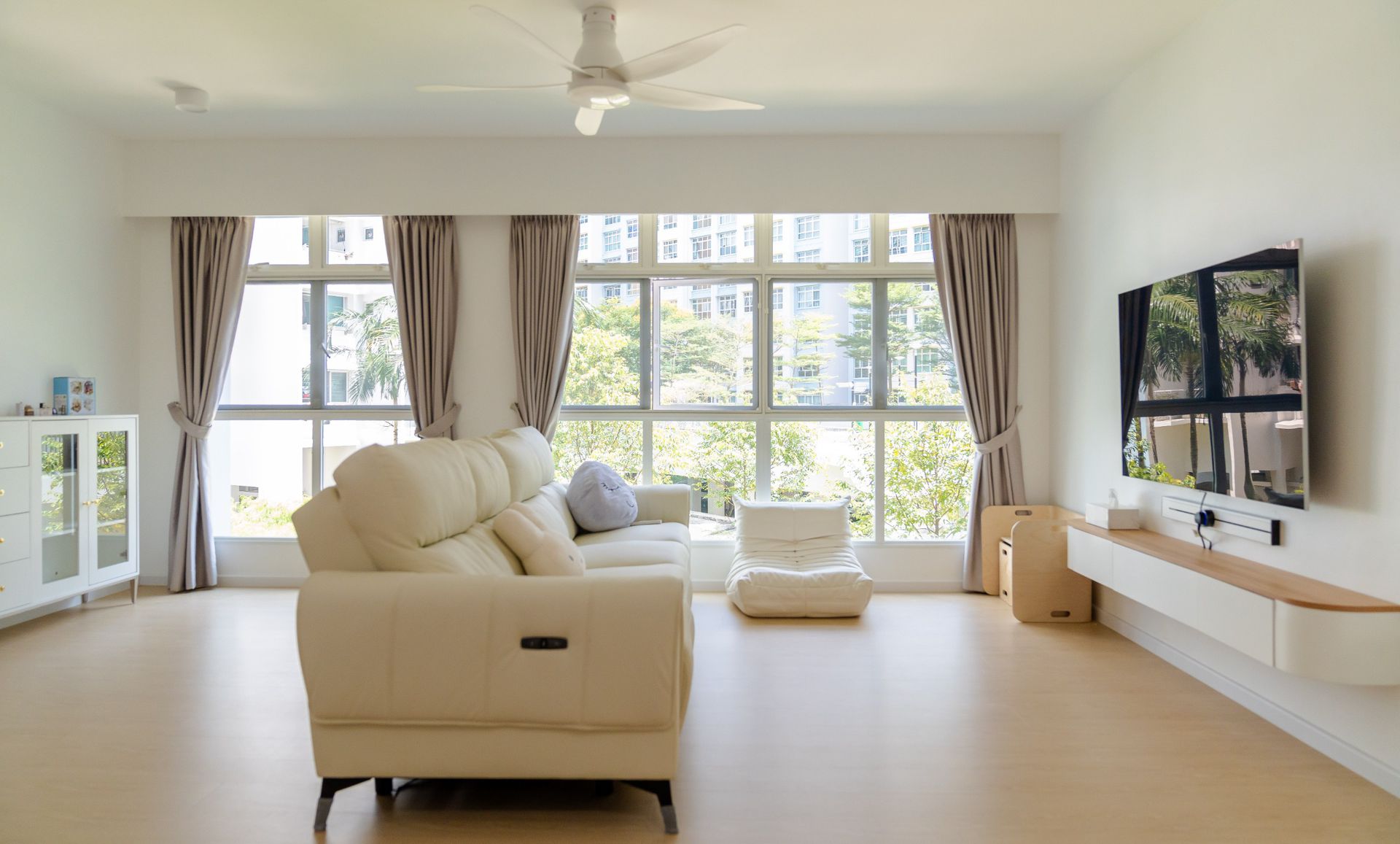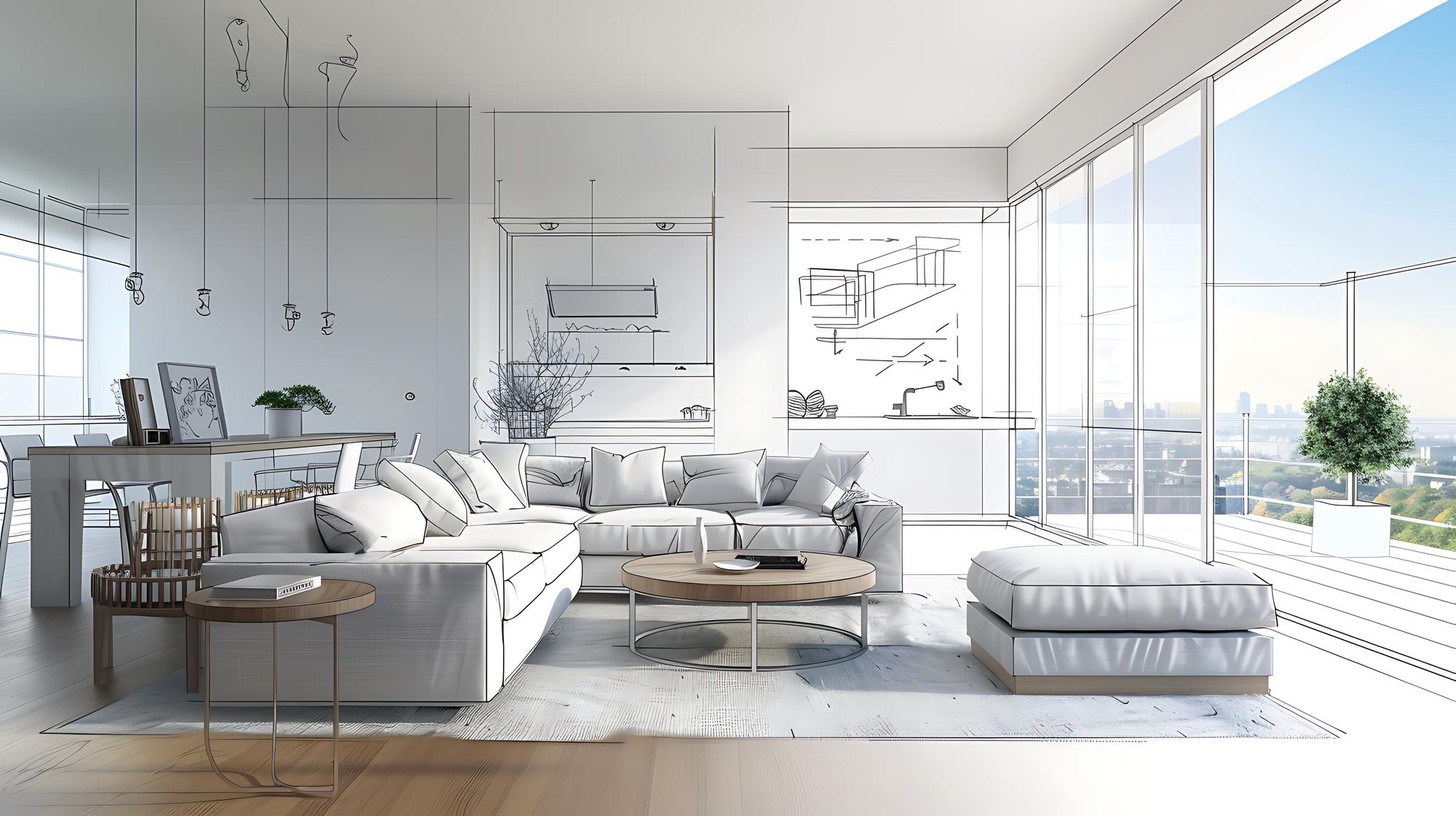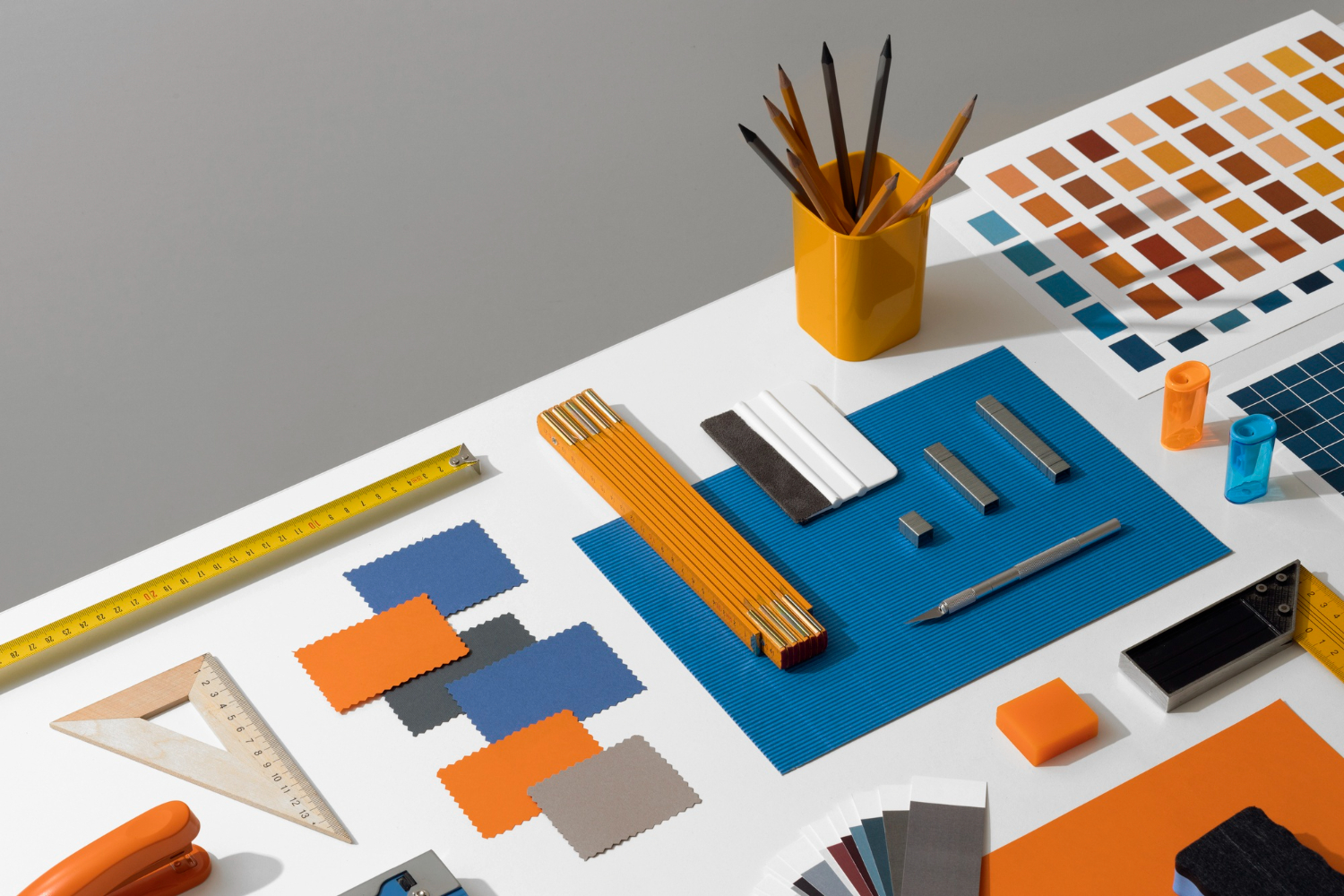The Ultimate Guide to Cost and Budget Planning for Interior Design in Singapore

The Ultimate Guide to Cost and Budget Planning for Interior Design in Singapore
Introduction

Why Budgeting Matters for Interior Design in Singapore
Interior design is a significant investment, especially in Singapore’s high-cost environment, where space is valuable and demand for quality renovations is high. Whether you're planning a minor makeover or a full-scale renovation, understanding interior design costs in Singapore is essential to making informed decisions. The average HDB renovation costs between $20,000 and $60,000, while high-end upgrades for condos and landed properties can exceed $100,000.
This guide is designed to help you navigate the budgeting process for interior design, covering everything from choosing affordable materials to avoiding hidden renovation costs. With this guide, you’ll be empowered to create a beautiful, functional space that reflects your style without exceeding your budget.
For a detailed breakdown of typical costs for different renovation projects, check out our in-depth guide: How Much Does Interior Design Cost in Singapore?Section 1: Overview of Interior Design Costs in Singapore
Factors Affecting Interior Design Costs
Understanding the factors that impact interior design costs is key to effective budget planning. Here are the primary elements to consider:
Materials and Finishes: The type of materials you choose directly affects your budget. Premium materials like marble, granite, or solid hardwood can elevate your space, but these options come with a premium price. On the other hand, laminate or quartz countertops offer similar aesthetics at a lower cost and are low-maintenance options. For example, using high-quality laminates for cabinets can save costs while still achieving a polished look.
Complexity of Design: The intricacy of your design plan also affects the cost. Customized elements like bespoke cabinetry, built-in shelves, or feature walls require skilled craftsmanship, which increases labor costs. If you’re looking to maximize storage with custom cabinetry in a small space, like a kitchen or wardrobe area, expect higher costs due to the detailed work involved.
Labor and Contractor Fees: Skilled labor is essential for quality results but comes at a cost. Hiring experienced professionals often helps avoid mistakes that could lead to expensive repairs. which can vary based on the level of expertise, project scale, and the specific requirements of your renovation.
For more ideas on budget-friendly materials that still create a polished look, read our article on Budget-Friendly Interior Design Ideas for Singapore Homes.
Cost Breakdown by Property Type
Different property types in Singapore have unique renovation requirements, and the costs vary accordingly. Here’s what you can expect:
HDB Flats: Renovating an HDB flat is often more budget-friendly than condos or landed properties, but costs can still vary widely based on design choices.
Basic Renovation: Small updates, such as new cabinetry, fresh paint, and lighting, typically start around $10,000.
Full Renovation: For extensive makeovers involving flooring, new kitchen installations, and bathroom upgrades, costs range from $30,000 to $60,000.
Luxury HDB Renovation: Adding high-end fixtures, custom cabinets, and energy-efficient appliances can increase the budget to $100,000+.
Condos: Renovating a condo may require more customization due to unique layouts and condo management guidelines.
Standard Condo Renovation: For minor enhancements, you may spend $30,000 to $50,000.
Mid-Range Remodel: A comprehensive remodel with custom features and high-quality materials ranges from $60,000 to $100,000.
Luxury Condo Renovation: High-end upgrades with custom furniture, smart home integration, and premium finishes may cost $120,000 or more.
Landed Properties: Renovating a landed home is often the most expensive due to larger space and possible structural changes.
Basic Refurbishment: Costs for minor upgrades, such as new flooring or painting, range from $40,000 to $80,000.
High-End vs. Budget-Friendly Renovations

Achieving a well-designed space can happen on any budget. Here’s how luxury and budget-friendly renovations compare:
Luxury Design: For a high-end look, consider investing in custom furniture, solid wood flooring, integrated smart home technology, and premium lighting fixtures. These elements create a unique, high-value appeal but come at a higher cost.
Budget-Friendly Design: Opt for modular furniture, laminate finishes, and vinyl flooring for an affordable yet stylish look. Prefabricated cabinets and open shelving are cost-effective choices that add functionality and style without a significant expense.
Section 2: How to Create a Realistic Interior Design Budget
Setting a Baseline Budget
To establish a practical budget, start by determining the scope of your renovation:
Assess Your Goals: Think about what you want to achieve—whether it’s a refreshed look, more storage, or better functionality.
Consider Property Value: For a balanced approach, aim to spend 5-10% of your property’s value on renovations.
Factor in Contingencies: Budget an additional 10-15% for unexpected expenses, as demolition can reveal hidden issues that may require additional work.
Prioritizing High-Impact Areas
Focus on areas that add the most value to your home. Here’s a breakdown:
Kitchens and Bathrooms: These high-traffic spaces yield the best return on investment. For a stylish, functional kitchen, consider quality cabinetry and countertops. Bathroom upgrades, like new tiles or fixtures, add value and improve daily use.
Living Room: A well-designed living room enhances comfort and style. Opt for versatile furniture, ample storage, and lighting that creates a warm ambiance.
Budget Allocation Strategy
A balanced allocation strategy ensures that essential elements are covered without compromising on quality:
Fundamental : 40%
Design and Consultation : 5 - 10% Fees for design services, 3D renderings, and space planning.
Hacking and Demolition : 10 - 15%, Removal of old structures, tiles, and fixtures.
Plumbing and Electrical : 15 - 20%, Installation of wiring, lighting, and sanitary systems.
Masonry and Carpentry : 25 - 35%, Floor tiling, wall finishes, custom furniture, and cabinetry.
Painting and Finishes : 10 - 15%, Wall painting, wallpapers, and other finishes.
ixtures and Appliances : 10 - 20%, Lighting, kitchen appliances, and bathroom fittings.
Miscellaneous: 5 - 10% , Contingency for unforeseen costs.
To understand typical renovation costs based on project scope, see our guide on How Much Does Interior Design Cost in Singapore.
Section 3: Essential Tips for Budget-Friendly Interior Design
Affordable Materials & Alternatives
Affordable materials allow you to achieve a premium look without high costs. Consider these options:
Laminate vs. Solid Wood: Laminate provides a wood-like appearance and is more budget-friendly than solid wood.
Quartz vs. Marble Countertops: Quartz mimics the elegance of marble with less maintenance, making it a practical and cost-effective choice.
Vinyl and Engineered Wood Flooring: These options are affordable, durable, and come in various styles, ideal for high-traffic areas.
Design Techniques for Small Spaces
For Singapore’s compact living spaces, smart design can make a significant difference:
Multi-Functional Furniture: Invest in pieces that serve dual purposes, such as sofa beds, storage ottomans, or extendable dining tables, maximizing space efficiency.
Vertical Storage: Utilize walls for storage with shelving units or mounted cabinets, keeping floors clear and adding an open feel.
Mirrors and Lighting: Mirrors create the illusion of a larger space, while layered lighting enhances the ambiance, making rooms feel more spacious.
DIY Elements for Cost Savings
Incorporating DIY projects can add personality to your space while saving on costs. Consider these ideas:
Accent Walls: Use paint or wallpaper to create a striking feature wall that adds depth to any room.
Custom Decor: Personalize your decor with DIY art, framed photos, or upcycled furniture, allowing you to add a unique touch without the price tag of designer items.
Section 4: Hidden Costs to Watch Out For in Singapore Renovations
Unforeseen Structural Adjustments
Demolition may uncover structural issues, such as outdated electrical wiring, plumbing issues, or damaged walls. These repairs can be costly, so it’s wise to set aside an additional 10-15% of your budget for such contingencies.
Permit and Compliance Fees
In Singapore, renovations require specific permits, particularly for HDB flats and condos. Permit fees can range from $300 onwards, depending on the type and scope of renovation. Working without proper permits may lead to penalties, so consult your contractor about necessary approvals.
Upgrading Fixtures and Finishes
Upgrading to premium fixtures mid-project can increase costs unexpectedly. It’s easy to be tempted by high-end finishes during renovations, so sticking to initial choices can help you avoid unnecessary expenses. Focus on a few essential splurges rather than upgrading everything.
Unanticipated costs can strain your budget. To ensure you’re well-prepared, check out Hidden Costs in Home Renovation: What Every Singaporean Homeowner Should Know.Section 5: Balancing Luxury and Affordability
Smart Splurges
Certain areas are worth the extra investment for long-term satisfaction:
Flooring: Durable flooring materials like engineered wood or porcelain tiles may cost more upfront but will withstand wear and tear, making them worth the investment.
Lighting: Good lighting enhances ambiance and functionality. Choose energy-efficient lighting options for both style and cost savings.
Mixing High-End and Budget Elements
Combining premium and budget-friendly elements creates a balanced, cohesive look:
Furniture: Pair high-quality sofas or beds with affordable accessories like pillows, throws, and wall art.
Fixtures: Use budget-friendly fixtures for secondary spaces, while reserving premium finishes for high-traffic areas.
Long-Term Value vs. Initial Cost
Prioritize elements that offer lasting benefits, such as energy-efficient fixtures and durable surfaces. While the upfront cost may be higher, these investments often lead to savings over time, reducing maintenance and utility costs.
For more information on where to allocate your renovation budget for maximum impact, read our guide on How Much Does Interior Design Cost in Singapore?Conclusion
By understanding interior design costs in Singapore and planning strategically, you can create a stylish and functional space that suits your lifestyle and budget. This guide offers a comprehensive roadmap for setting a realistic budget, prioritizing high-impact areas, and making smart choices that balance quality with affordability. For personalized guidance, visit designplus.sg to connect with the Design Plus team, where our experts are ready to help bring your vision to life.
For a deeper look into budgeting tips, average costs, and creative ideas, explore our related articles:
How Much Does Interior Design Cost in Singapore
Budget-Friendly Interior Design Ideas for Singapore Homes.
Hidden Costs in Home Renovation: What Every Singaporean Homeowner Should Know.


